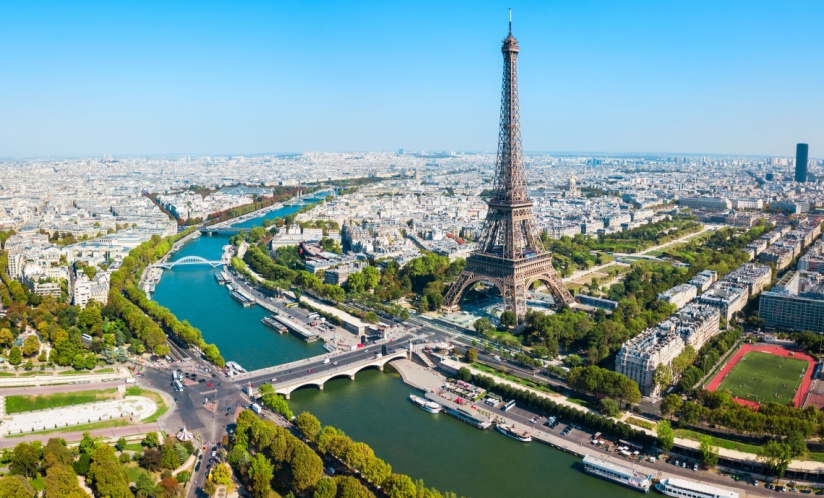Cleaning Up the Seine: An Olympic Feat

Diving into the health risks present in urban waterways like the Seine, what it takes to clean them up, and how similar efforts have been made in Atlanta.
Swimming in the Seine River has been illegal for over a century, but some are hopeful that may change after the 2024 Olympics and Paralympics in Paris.
The Seine will be the site of both the marathon swimming event and the swimming leg of the triathlon, as well as the location for the opening ceremony on July 26. With the first triathlon competition date looming on July 30, athletes, organizers, and spectators around the world are waiting to see if Paris’ efforts to clean up the river will succeed in time. Although Paris Mayor Anne Hidalgo swam in the Seine on July 17 to showcase its improvements, some water, sanitation, and hygiene (WASH) experts remain skeptical.
According to Christine Moe, PhD, Eugene J. Gangarosa Professor of Safe Water and Sanitation and director of the Center for Global Safe WASH, to understand what is happening in the Seine, we can look to other major cities like Atlanta.
“In Paris, their main problem is sewage, and in Atlanta we sometimes have a problem with sewage as well when we have heavy rainfalls,” she says. “Lots of cities have older sewage systems that have not been able to keep up with population growth. There can be problems with what are called combined sewer overflows, where the rainwater and the water coming from household toilets and sinks get combined, and then they may overflow into the river.”
Health Hazards in the Seine
Untreated bodies of water like lakes and rivers always carry a risk for contamination. In places like Atlanta and Paris that have some areas with combined sewer systems, that risk is higher.
Pathogenic bacteria, viruses, and protozoa can all be found in urban waterways that are contaminated with sewage. Some of the most common in the U.S. are norovirus, shigella, E. coli, and cryptosporidium, all of which can cause gastrointestinal distress—sometimes severe—when accidentally ingested while swimming. Other pathogens in the water can cause rashes, eye irritation, or ear infections.
In Paris, city officials have been testing water for two bacteria in particular, E. coli and enterococci, to monitor water quality leading up to the games.
“Those two bacteria are markers for sewage,” says Moe. “They are relatively easy to measure, and if we detect them, we know that there are most likely other disease-causing organisms like viruses and protozoa in the water. Microorganisms like viruses and protozoa are harder to detect, so that's why you need something that can be easily measured on a routine basis.”
Throughout June, levels of both of these indicator bacteria were much higher than the threshold set by the World Triathlon Federation, but things have improved during July. Levels of both bacteria were below the threshold on July 16, the day before Hidalgo’s swim, according to data reported by Paris.
For inland water, like rivers, the maximum allowable amounts of E. coli and enterococci set by the World Triathlon Federation are 900 and 330 colony-forming units per 100 mL of water, respectively. These are both higher than the thresholds set by the U.S. Environmental Protection Agency for recreational water.
Keeping Our Rivers Clean
At the center of Paris’s $1.5 billion effort to clean up the Seine is a massive new rainwater storage tank. The tank is designed to hold extra runoff water during rainstorms, which will hopefully keep the sewage system from being overwhelmed and keep contaminants out of the river.
Moe says that Atlanta successfully implemented a similar strategy. But, as we look into a future with even more unpredictable weather patterns, we may need to do more to keep our urban rivers clean.
“Over the past 20 years that I have been taking students on tours of the wastewater treatment facilities in Atlanta, they have upgraded, and they have put in huge tanks to catch the flow when there is heavy rainfall, much like what they have now built in Paris,” she says. “I think for the most part, that is successful. But with climate change and the increasing number of catastrophic heavy rainfalls, there may be certain times when it's still not enough.”